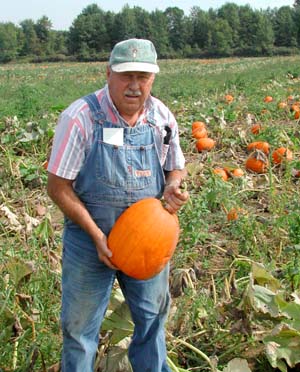
September has been very favorable to pumpkin growers, Bob King, agricultural specialist at Cornell Cooperative Extension said. During the first nine days of September, pumpkin growers experienced ideal conditions for explosive growth, sizing and maturity of the crop due to several days of hot and dry weather that was preceded and followed by bouts of heavy rains. As a result, many farmers are reporting increased yield and size on many different pumpkin and winter squash varieties. Although many pumpkin fields were planted two weeks later than normal, September weather conditions have been ideal for plants to grow and fruit to size up quickly. This outcome is unexpected but welcomed in light of otherwise difficult growing conditions for many vegetable, grain and hay farmers. Generally, pumpkins bloom and set fruit in three stages referred to as primary set, second set and third set. Usually, only the primary set will size and mature in time to be marketable. Several farmers in Monroe County as well as neighboring counties have reported that the second set of pumpkins is also sizing quickly and will mature in time to be marketable for the Halloween season. A small number of farmers suggest that even the third set of pumpkins could be marketable, which is extraordinary except during times of extreme and stressful growing conditions. Typically during an average growing season, the second and third set of pumpkins will not mature in time to be marketed for Halloween. For the Rochester region, pumpkins are starting to show up at farm markets and some road side stands. Generally, the pumpkin crop is of good quality and yield. However, we expect a slightly smaller crop in terms of number and selection as compared to last year, which was also a light crop. Pumpkins will likely be heavier in weight due to consistent and heavy rains. Although wet conditions tend to favor disease and insect pressure, many farmers are reporting success in controlling for these production problems. |
